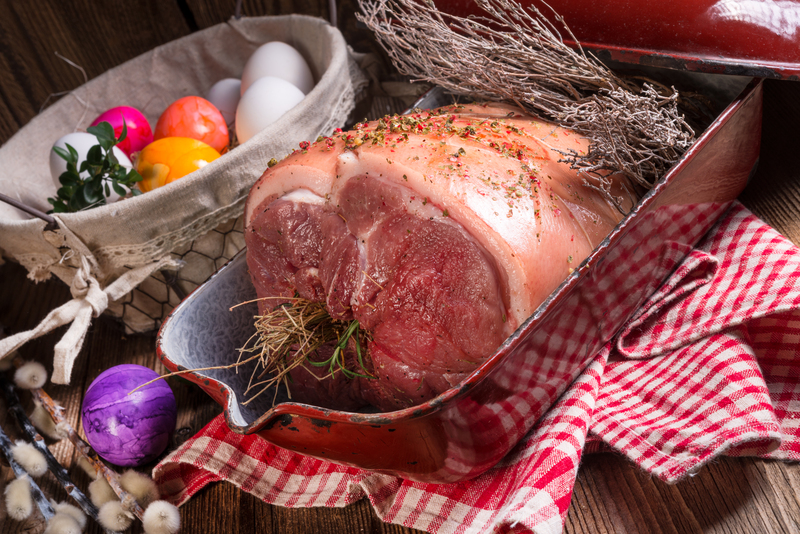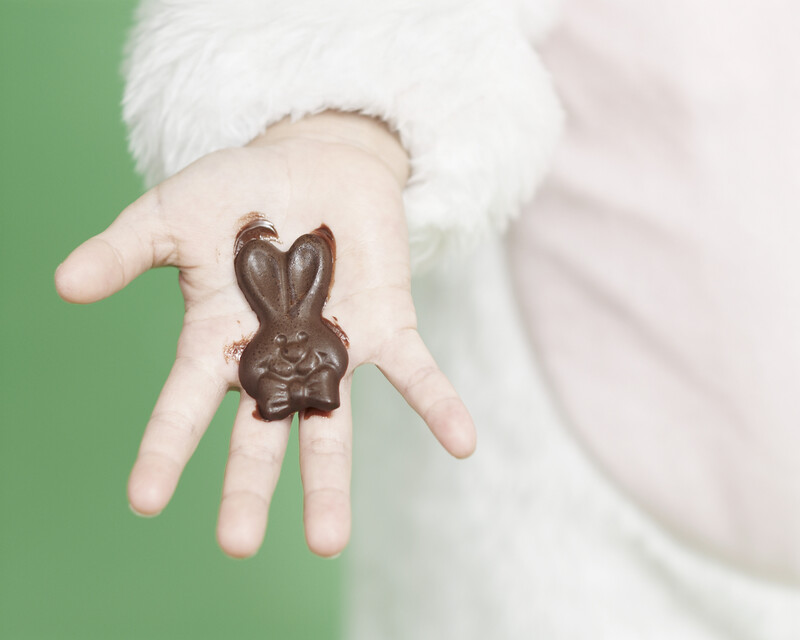Effortlessly Clean Burnt-On Residues from Your Stovetop
Posted on 08/06/2025
Effortlessly Clean Burnt-On Residues from Your Stovetop: The Ultimate Guide
Few kitchen dilemmas are as stubborn--and unsightly--as burnt-on residues clinging to your stovetop. Whether it's a splash of pasta sauce or an accidental boil-over, these stubborn stains not only affect the aesthetic of your kitchen but can also hinder performance and hygiene. If you've ever wondered how to efficiently clean burnt stovetops without excessive scrubbing or harsh chemicals, you're in the right place. This comprehensive guide covers easy, tried-and-true methods to remove burnt-on food from any stovetop type, along with expert tips, preventive measures, and answers to frequently asked questions.

Understanding Burnt-On Residues: Why Are They So Stubborn?
Burnt-on residues form when food spills or grease is exposed to high heat and then left to cool, effectively "baking" it onto the stovetop surface. This process not only makes the burnt residue difficult to remove but also increases the risk of scratching or damaging the finish of your stovetop during cleaning.
- Repeated Heating: Each time you use the stove without cleaning previous spills, the residue gets re-baked, making it even more difficult to remove.
- Type of Spill: Sugary and starchy foods (like jam or rice water) usually create the hardest-to-clean stains.
- Stovetop Material: Burnt residues interact differently on glass, ceramic, enamel, and stainless steel surfaces.
Cleaning Burnt-On Residues: What Works Best?
Before diving into specific methods, it's important to choose a cleaning approach tailored to your stovetop material. Using the wrong products or techniques can leave permanent scratches or discoloration. Here's how to clean burnt-on food from glass, ceramic, enamel, and stainless steel stovetops--effortlessly!
1. How to Clean Burnt-On Residue from Glass or Ceramic Stovetops
Glass and ceramic stovetops are popular for their sleek appearance, but they require a gentle touch.
- Allow Stovetop to Cool: Never attempt to clean a hot surface.
- Wipe Loose Debris: Use a damp microfiber cloth to remove loose particles.
- Apply a Baking Soda Paste: Mix 2 tablespoons of baking soda with a little water to form a paste. Gently spread over the burnt area.
- Let It Sit: Allow the paste to rest for 15-20 minutes. Baking soda softens and lifts the residue.
- Scrape Gently: Use a plastic scraper or credit card. Hold at a 45-degree angle and gently push the residue off. Never use metal as it may scratch the surface.
- Final Wipe: Use a soft, damp cloth to remove remnants of the paste and loosened debris.
Pro Tip: For stubborn, stuck-on food, place a warm, wet towel over the area for 10 minutes before repeating this process--it helps to loosen residues.
2. Best Method for Stainless Steel Stovetops
Stainless steel cooktops are durable but can be prone to scratching and discoloration with the wrong cleaners.
- Mix a Gentle Cleaning Paste: Combine equal parts baking soda and dish soap for a slightly abrasive, yet safe cleaner.
- Apply and Sit: Spread the paste over burnt areas and let sit for 10 minutes.
- Scrub with a Soft Sponge: Always go with the grain of the steel to avoid scratching. Avoid using steel wool pads.
- Rinse and Dry: Wipe clean with a damp microfiber cloth, then dry to prevent streaks and water spots.
3. Effortlessly Clean Burnt-On Residue from Enamel Stovetops
If you're dealing with an enamel-coated stovetop, you have a bit more leeway, as these are fairly resistant to scratches.
- Soak: Lay a warm, soapy towel over the affected area and let it soak for 15-20 minutes.
- Scrub: Use a non-scratch sponge or soft brush to gently scrub the loosened debris.
- Lemon Power: For extra-tough spots, rub a cut lemon over the stains for the natural degreasing power.
- Wipe and Dry: Rinse and dry thoroughly.
4. Commercial Cleaners: When and How to Use Them
While homemade solutions are often effective, sometimes commercial stove cleaners (like Bar Keepers Friend or Cerama Bryte) are needed for deeply burnt-on residues.
- Read Labels: Always verify it is safe for your stovetop material.
- Test Spot: Try on a small area first to ensure no damage.
- Ventilate: Use in a well-ventilated area; avoid mixing with other cleaning agents.
Essential Tools to Clean Burnt Residues Easily
Having the right tools ensures you can clean your stovetop without risk of damage or excessive effort. Here are the best items to have on hand:
- Microfiber Cloths (ultra-soft, lint-free wiping)
- Plastic Scrapers (safe for glass and ceramic)
- Non-Abrasive Sponges (avoid steel wool except on grates only)
- Baking Soda and White Vinegar (multi-purpose natural cleaners)
- Lemon (for its acidic, grease-cutting properties)
- Mild Dish Soap
- Commercial Stove Cleaner (for stubborn messes)
Preventing Burnt-On Residues: Maintenance Tips for a Spotless Stovetop
Regular maintenance is the best defense against burnt-on food on your stovetop. Here's how to keep your stovetop sparkling and prevent future messes:
- Clean Spills Immediately: As soon as your stovetop cools, wipe up any spills before they harden.
- Use Spill Guards: Simmer mats, silicone covers, or foil liners can catch overflow and are easy to replace.
- Weekly Deep Clean: Make it a habit to clean your stovetop thoroughly at least once per week, even if it appears clean.
- Avoid High Heat: Use lower temperatures to minimize splatters and burnt residues.
- Monitor Cooking: Keep an eye on pots to prevent boil-overs and spitting grease.
- Ventilate: Use an exhaust fan to reduce greasy deposits on and around your stove.
What to Avoid When Cleaning Burnt-On Residues
Using the wrong tools or cleaners can severely damage your stovetop. Here are critical mistakes to avoid:
- Don't Use Metal Scrapers: These can scratch glass, ceramic, and stainless steel surfaces.
- No Oven Cleaner on Glass: Oven cleaner is too strong for most stovetops, especially glass or ceramic types.
- Avoid Steel Wool (except on grates): Steel wool erodes enamel and stains stainless steel.
- Never Mix Ammonia and Bleach: This is highly toxic.
- Don't Submerge Electric Stovetops: Water ingress can damage electrical components.
Special Tips for Cleaning Stove Grates and Burner Caps
Don't forget about your stove's grates and burner caps. They often accumulate heavy burnt-on grease and food, especially after cooking oily or messy dishes.
Effortlessly Remove Burnt Residues from Stove Grates
- Remove Grates: Once cool, take them off and soak in a sink with hot water and a few drops of dish soap for 20 minutes.
- Scrub: Use a non-abrasive brush or sponge for scrubbing.
- Baking Soda Paste: For stubborn stains, make a baking soda and water paste and let it sit before scrubbing again.
- Rinse and Dry: Rinse thoroughly and dry completely before returning to the stovetop.
Effortlessly Clean Burnt-On Food from Electric Coil and Induction Stovetops
- Electric Coil: Wipe the area under the coil with a damp cloth and mild soap. If the coil has food burnt onto it, gently scrub with a damp cloth--never submerge coils in water.
- Induction Stovetop: Clean gently as with glass surfaces. Avoid abrasive pads or harsh chemicals; stick to soft materials and mild paste cleansers.
Eco-Friendly and Natural Cleaning Solutions
Looking for a greener, safer alternative? Natural solutions are often just as effective as commercial counterparts--without harsh chemicals or lingering odors.
White Vinegar
- Spray onto burnt stains and allow to sit for 15 minutes.
- Wipe with a microfiber cloth; vinegar breaks up greasy or sticky burnt-on food easily.
Lemon Juice
- Apply freshly squeezed lemon juice to stains.
- Let sit and use the cut lemon to rub stains away; the natural acidity helps dissolve residues.

Effortlessly Clean Burnt-On Residues from Your Stovetop: Frequently Asked Questions
Can I use baking soda on all stovetop surfaces?
Yes, but with caution. While baking soda is a gentle abrasive, always create a paste to avoid powder scratches, and test a small area, especially on glass or induction stovetops.
How do I remove burnt sugar from my stove?
Burnt sugar can be very tough. Pour a little hot water over the burnt area (ensure stovetop is off and cool), then apply a baking soda or vinegar paste. Let it soak, then carefully scrape with a plastic tool and wipe away with a microfiber cloth.
Should I use razor blades on glass stovetops?
Only as a last resort--and with proper care. If you must, use a specialized glass scraper held at a shallow angle, applying gentle pressure. Always check your manufacturer's guidelines first.
Final Tips: Keep Your Stovetop Shining with Minimal Effort
With the right methods, cleaning burnt-on residues from your stovetop doesn't have to be a dreaded task. Incorporate these easy cleaning routines and tools into your kitchen maintenance, and enjoy an effortlessly spotless stove every day! Remember, prompt attention to spills, regular wipe-downs, and gentle cleaning agents are your best friends. Sometimes, preventing burnt-on residues is as simple as staying attentive in the kitchen and having the right supplies within reach.
So next time spills and burnt food attempt to leave their stubborn mark, you'll be ready to tackle them--quickly, safely, and effectively. Happy Cooking!


